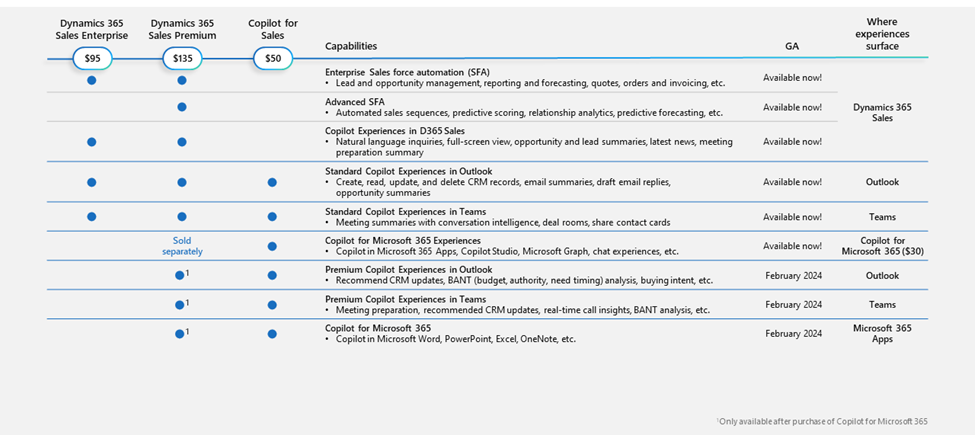Adobe Stock is a comprehensive stock media service offering a vast library of high-quality assets, including photos, videos, templates, and vectors. The Enterprise Licensing Options enable businesses to access and utilize these resources effectively, ensuring seamless integration into their projects while providing legal coverage and additional tools to meet corporate needs. This guide explores Adobe Stock and the different enterprise licensing options available to help organizations maximize their creative potential.
What is Adobe Stock and Its Benefits
Adobe Stock is a collection of royalty-free assets that can be used by individuals and businesses alike to enhance their creative projects. It offers millions of high-quality images, illustrations, videos, templates, and 3D assets sourced from talented creatives around the world.
Some key benefits of Adobe Stock include:
- Extensive Library: Access to millions of assets to fit any project requirement.
- High-Quality Materials: All assets meet professional quality standards, ensuring polished finished products.
- Seamless Integration: Adobe Stock integrates seamlessly with Adobe Creative Cloud applications, streamlining the workflow for creative professionals.
- Flexible Licensing: Various licensing options cater to different project scopes and budgets, making it suitable for businesses of all sizes.
Types of Enterprise Licensing Options Available
Adobe Stock offers several enterprise licensing options tailored to meet the diverse needs of businesses. This includes:
- Team Licenses: Ideal for smaller teams, allowing multiple users to share a set number of assets under one account.
- Enterprise Licenses: Designed for larger organizations, providing a scalable solution with advanced analytics, usage tracking, and dedicated support.
- Custom Plans: Tailored solutions that cater to specific business requirements and workflow, ensuring maximized asset utilization.
By choosing the right licensing option, organizations can not only simplify their access to Adobe Stock resources but also streamline their creative processes while safeguarding their projects through proper licensing coverage.
How to Choose the Right Licensing Option for Your Business
Choosing the right licensing option for your business can feel a bit overwhelming, especially with the variety of Adobe Stock offerings available. But don’t worry! We’re here to help you navigate this process with a few simple steps.
1. Assess Your Needs: Start by determining how your business will use stock images, videos, or templates. Consider factors such as:
- Volume of content needed
- Frequency of use (daily, weekly, monthly)
- The types of projects you undertake (marketing, social media, website design, etc.)
2. Evaluate Your Team: Look at the size and structure of your team. If you have multiple departments needing access to content, an enterprise license could be the best fit. Also, assess whether team members need individual access or if a more centralized purchasing model would work better.
3. Budget Considerations: Cost is always a consideration. Compare the pricing of individual licenses with enterprise options. Sometimes, enterprise licenses can offer a better return on investment, especially if you foresee high usage of stock assets.
4. Future Growth: Think about your business’s growth trajectory. If you plan on expanding your services or increasing marketing efforts, an enterprise license might provide the scalability you need without the hassle of renegotiating contracts.
Once you’ve gone through these steps, you’ll be in a better position to make an informed decision that aligns with your organization’s goals and workflows. Remember, it’s not just about getting the most assets; it’s about getting the right assets for your creative vision!
Key Features of Adobe Stock’s Enterprise Licenses
Adobe Stock‘s enterprise licenses come packed with features designed to streamline asset usage for larger organizations and teams. Here are some key features to consider:
| Feature | Description |
|---|---|
| Volume Discounts | Tailored pricing options that can reduce costs for high-volume users. |
| Flexible Licensing | Licenses that allow for both traditional and extended usage, perfect for diverse projects. |
| Team Collaboration Tools | Easy sharing and collaboration features to help teams work together efficiently. |
| Custom Collections | Create specific libraries for your team’s projects, ensuring easy access to frequently used assets. |
| Integration with Creative Cloud | Seamless integration with Adobe Creative Cloud apps, boosting productivity. |
These features not only enhance productivity but also help ensure compliance with licensing terms, giving you peace of mind as you create and publish engaging content for your audience. When considering an enterprise license, think about how these features can specifically benefit your workflows and creative teams.
How to Purchase and Manage Your Enterprise License
Purchasing an Adobe Stock Enterprise License can seem a bit daunting at first, but it’s a pretty straightforward process once you break it down. Here’s a simple guide to help you navigate through it:
- Contact Adobe Sales: The first step in acquiring an Enterprise License is to get in touch with Adobe’s sales team. This can usually be done through their website or by calling their sales support. Make sure to provide details about your company’s needs, such as the number of users and the types of content you’re interested in.
- Discuss Your Needs: During your discussion, be prepared to outline your organization’s goals. Are you utilizing stock images for marketing, design projects, or something else? Understanding your usage will help Adobe tailor the license to fit your needs.
- Review Options: Adobe offers various options for Enterprise Licenses, including different usage rights and content types. Make sure to work with an Adobe representative to understand which package is right for you.
- Sign the Agreement: Once you’ve settled on a package, you’ll need to review and sign the licensing agreement. This is an important document, so read it carefully and clarify any points you may not understand.
- Set Up Your Account: After signing, you’ll receive instructions on setting up your account. This typically includes creating user accounts for your team members who will access Adobe Stock.
- Train Your Team: Finally, consider organizing a training session for your team to get acquainted with the Adobe Stock platform. Knowing how to search, license, and download assets can save time and frustration later on.
Managing your Enterprise License is just as important as purchasing it. Regularly review your usage and content needs to ensure that your license continues to meet your requirements. Adobe also provides tools within your account to track downloads and manage user access, making it easy to keep everything organized.
Cost Considerations for Adobe Stock Enterprise Licenses
When it comes to budgeting for Adobe Stock Enterprise Licenses, there are several factors to keep in mind. Understanding these cost considerations can help you make a more informed decision:
- Type of License: Enterprise Licenses can vary significantly based on the type and number of assets you need. The more extensive your content library and the more users you plan to include, the higher the cost.
- Usage Volume: Adobe often provides volume pricing, so if you anticipate high usage (like large marketing campaigns), it may be beneficial to discuss bulk discounts with Adobe.
- Content Type: Different types of content (photos, videos, templates, etc.) may have different pricing structures. Make sure to assess what types of visuals you’ll be using most frequently and how that impacts your costs.
- Custom Solutions: If your organization has unique requirements or usage scenarios, Adobe may offer custom solutions that could affect the price. Engaging in discussions with their sales team can help clarify these options.
- Renewal and Upgrades: Keep an eye on renewal pricing. Sometimes, license fees can change after the initial term. Additionally, consider if you might need to upgrade your plan as your company grows.
Lastly, while the initial investment may seem significant, remember that having access to high-quality, royalty-free stock assets can save time and resources in your creative processes. Evaluating cost against the value it brings to your projects is key to making the right decision.
Common Use Cases for Adobe Stock Enterprise Licensing
When it comes to utilizing Adobe Stock Enterprise Licensing, the options are as versatile as your creative needs. Whether you’re a large corporation, a marketing agency, or a content creation team, understanding the common use cases can help you maximize your investment. Here are some popular scenarios where Adobe Stock Enterprise Licensing shines:
- Large-Scale Marketing Campaigns: If you’re running a campaign across various platforms—digital, print, or outdoor—Adobe Stock’s vast library helps you maintain a consistent visual identity.
- Social Media Content: For teams producing high volumes of images and videos for social media, the enterprise plan allows seamless access to fresh content that can keep your audience engaged.
- Website Design and Development: Designers looking to enhance web pages can source high-quality images and graphics that align perfectly with branding needs without worrying about licensing hassles.
- Video Production: The licensing options cover not only static images but also high-resolution videos, which is essential for creating dynamic visual content.
- Corporate Presentations: Whether it’s a quarterly review or an international conference, using professional images adds credibility and interest to your corporate presentations.
- Print Publications: Magazines, brochures, and reports can benefit from high-quality visuals, making Adobe Stock an essential resource for print media.
In short, the flexibility and extensive library offered by Adobe Stock Enterprise Licensing cater to a varied range of business needs. However, understanding how to integrate stock content into your workflow effectively can further enhance these benefits.
Frequently Asked Questions About Adobe Stock Licensing
If you’re considering Adobe Stock for your enterprise needs, you probably have some questions. Here are a few of the most frequently asked questions about licensing:
| Question | Answer |
|---|---|
| What is the difference between standard and extended licenses? | Standard licenses cover most uses, while extended licenses allow for more commercial projects, including merchandise and app development. |
| Can I use Adobe Stock images in templates? | Yes, but with specific restrictions. You must ensure the final product doesn’t allow for others to extract or reuse the images. |
| Are there any limitations on the number of images I can download? | The enterprise plan usually allows for a substantial number of downloads, but specific limits may vary based on your agreement. |
| Do I need to credit Adobe Stock or the creators? | No, you don’t need to credit, but doing so can support the creators and enhance your content’s credibility. |
| What happens if I cancel my subscription? | You will lose access to any downloaded assets, but you can continue to use assets you already downloaded under the original licensing terms. |
Understanding the ins and outs of Adobe Stock licensing can simplify your content creation process and ensure you’re using assets legally and effectively. If you have more questions, Adobe’s support team is always there to help clarify.
Understanding Adobe Stock Enterprise Licensing Options
Adobe Stock offers a variety of licensing options tailored specifically for businesses and enterprises. Understanding these options is essential for organizations looking to leverage high-quality images, videos, and other assets for their branding and marketing efforts.
Key Features of Adobe Stock Enterprise Licensing
The enterprise licensing options come with unique features designed to meet the needs of larger organizations. Key features include:
- Flexible License Types: Choose between standard licenses for marketing materials and extended licenses for more comprehensive usage.
- Custom Pricing: Tailored pricing models that fit the budget and usage needs of your organization.
- Team Collaboration: Enhanced collaborative features that allow teams to share assets seamlessly.
- Usage Tracking: Tools to monitor and manage asset usage across the organization, ensuring compliance.
Comparison of Licensing Options
Here’s a brief comparison of the primary licensing options available through Adobe Stock:
| License Type | Usage Rights | Price Range |
|---|---|---|
| Standard License | Web, print, and social media ads | $29.99/image |
| Extended License | Merchandising, print-on-demand, and more | $79.99/image |
| Enterprise License | Comprehensive rights for internal and external use | Custom pricing |
By understanding these options, businesses can select the best Adobe Stock licensing plan that aligns with their market strategies and creative projects.
Conclusion and Next Steps for Businesses
In conclusion, Adobe Stock Enterprise Licensing provides businesses with flexible, customizable options that cater specifically to their asset needs. Organizations should evaluate their requirements and consider leveraging Adobe Stock’s extensive library to enhance their visual content while ensuring compliance and collaboration across teams.


